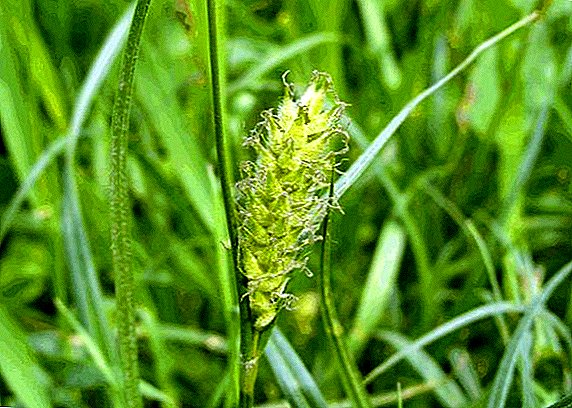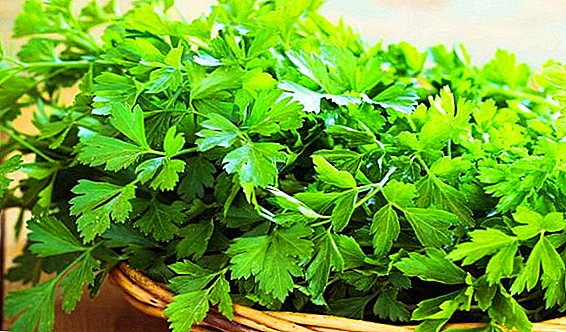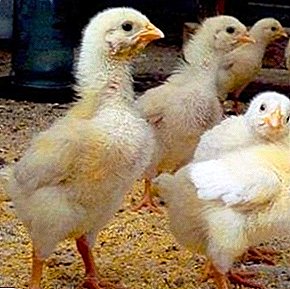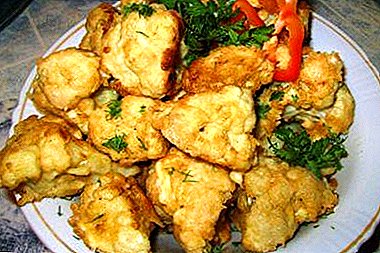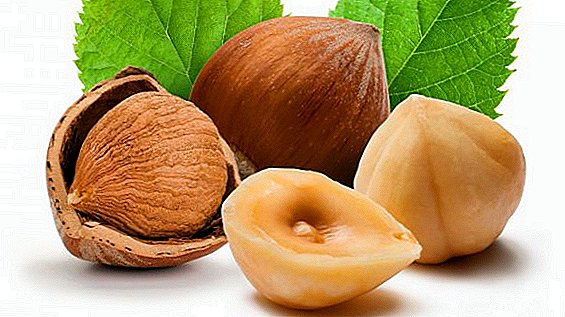 Of all the avian diseases, flu is still considered the most dangerous. Due to the high mortality of the chicken population and the losses incurred in the farm, the disease is called the plague. How to recognize the cunning enemy, where to wait for him and whether it is possible to save the feathered wards - we will tell about this later in the article.
Of all the avian diseases, flu is still considered the most dangerous. Due to the high mortality of the chicken population and the losses incurred in the farm, the disease is called the plague. How to recognize the cunning enemy, where to wait for him and whether it is possible to save the feathered wards - we will tell about this later in the article.
Chicken flu and its characteristics
According to researchers, chicken flu includes about 10 strains that are fatal to chickens. Of all the types of infection studied, the most dangerous, even for experienced poultry farmers, are H5 and H7.
Did you know? In ancient times, the flu was called "influence." This name is due to unpleasant symptoms, the occurrence of which was associated with the placement of the planets and the moon. The then level of medicine did not allow to explain these processes differently.
The disease is characterized by a sharp incidence and rapid development of the virus. If you do not take timely action, you can lose all the livestock. Moreover, in recent years, scientists have begun to talk about the imminent danger of infection of people.

The first of these cases was recorded in Hong Kong. Then the birdsea H5N1 became deadly for the whole settlement. It should be noted that similar outbreaks, when the owners of a bird farm caught the disease, also occurred in Europe, Asia and Africa.
Carriers of infection are infected waterfowl. Many of them were able to adapt to it during the mutation period of the virus and survive, while remaining an active carrier of the disease. It is characteristic that in wild animals bird flu is asymptomatic, and for domesticated birds the virus is lethal.
Learn how to distinguish infectious laryngotracheitis, salmonellosis, Marek's disease, aspergillosis, mycoplasmosis, coccidiosis, infectious bronchitis, a syndrome of reduction of egg production, conjunctivitis, salpingitis.
In order for one chicken to become infected with this ailment, its one-time visit is enough to be surrounded by wild birds or their environment. And for infection of the whole herd may well be enough:
- malnutrition;
- overcrowded house;
- lack of periodic disinfection of feeders and drinkers;
- long livestock transportation;
- contact with ill and infected individuals, as well as with their eggs and feathers;
- availability of rodents in the hen house.
 Puffiness of the head is one of the final symptoms of the disease.
Puffiness of the head is one of the final symptoms of the disease.
Did you know? Every year in the modern world from 250 thousand to half a million people die from flu.
At particular risk of infection are young individuals who have not yet matured immunity. According to researchers at the University of Oxford, who have devoted a lot of time to the study of this topic, the spread of bacteria and the massive death of birds begin because chickens at home because of a short life do not have time to form strong protective functions of the body. This factor influenced the sudden increase in focal outbreaks of influenza in poultry.
Danger of disease and methods of transmission
Another unpleasant news for churches is the ability of bird flu to infect other feathered inhabitants of the household yard. The most vulnerable to infection are turkeys, ducks and geese, which can spread viruses. That is why the infection of one individual in the house kills all livestock.
 A short-term contact with a wild bird is enough for a disease of chickens.
A short-term contact with a wild bird is enough for a disease of chickens.
Scientists have identified several ways of infection with bird flu:
- Wildfowl and other bird droppings hit the chicken coop and walking places of the wards. In the dried state, its particles along with dust can get into the respiratory tract, which is dangerous for humans.
- Use of contaminated meat and egg products and water. From the body of an infected bird, the virus spreads to the environment with feces, secretions, and hatching eggs. If you eat poorly roasted meat, boiled soft-boiled eggs, the risks of human infection are very high. In the presence of feathers, excrement and eggs of diseased birds in the hen house, other birds are also infected. It is unacceptable for wild birds to enter the poultry houses, drink water from drinking bowls and feed on food intended for domestic animals.
- Contact with cats. This unexpected moment is fraught with the loss of livestock due to the fact that cats can bring infection into the yard by swallowing an infected rodent outside the yard. Therefore, it is better not to allow fluffy wards in the chicken coop. Indeed, due to physiological characteristics, mammals are more immune.
Important! Avian influenza virus is sensitive to iodine, 70 percent alcohol, formalin and Na hydrochloride.

In order to prevent infection with bird disease, people need to:
- Wash your hands thoroughly with soap and water after each visit to the poultry house, as well as before eating.
- Drink only boiled bottled water.
- To eat food (especially meat and egg) that has undergone a long heat treatment.
- Avoid contact with wild waterfowl (swans, ducks, geese, storks, cranes, herons).
- Follow your own safety measures during agricultural work. It should be borne in mind that viruses retain their viability over a long period. For example, in manure, the infection can persist for up to 3 months, and in water bodies - for 30 days. This is facilitated by low temperatures.
- Observe domestic feathered animals, changes in her behavior. After all, the timing of the diagnosis of the disease and therapeutic measures are of particular importance.
Did you know? According to the World Health Organization, from 2003 to 2005, 112 cases of human infection of the H5N1 strain of the avian influenza virus were reported in the world, of which 57 were fatal. Sick mainly residents of Vietnam, Thailand, Cambodia, and Indonesia.
The main forms of avian flu

Modern veterinary science classifies influenza to RNA viruses of the genus Orthomyxoviridae, which, according to their serological characteristics, include 3 serotypes:
- BUT - Its carriers are wild waterfowl. Outbreaks of this infection are often the cause of a human pandemic and mortality of poultry. The serotype is considered the most virulent and pathogenic for humans, and can lead to serious complications. Influenza A types are divided into several strains (H1N1, H2N2, H3N2, H5N1, H7N7, H1N2, H9N2, H7N2, H7N3, H7N5, H10N7, and others);
- B - the serotype is less common than the previous one. It mutates 2-3 times slower and is distinguished by genetic diversity. It is characteristic that its mutations lead to changes in circulating strains every 3-5 years, which is the cause of the corresponding epidemics. Note that a slight mutagenic potential and a limited number of carriers of viruses lead to the fact that the pandemic of influenza B is not fixed in nature;
- WITH - viruses of this serotype infect humans and animals, as well as provoke severe complications and local outbreaks. The absence of mutations in this form of flu is associated with the fact that a person is ill only once in a lifetime, and subsequently he develops a strong immunity.
Important! In humans, the symptoms of avian influenza are not different from signs of other viral infections, but mortality is much higher. In patients with the following: headache and muscle pain, weakness, fever, nausea, vomiting, diarrhea, bleeding from the nose and gums. On the 5th day of the development of the disease, breathing problems begin.
Scientists now know about 15 subtypes of type A viruses. The most dangerous of them are H5N1 and H7N7. Possible simultaneous circulation of several strains of influenza. It takes a very short time for the infection to infect a chicken. After 48 hours of the disease, you can lose all livestock.  Pupil lesions may be a symptom of bird flu.
Pupil lesions may be a symptom of bird flu.
There are cases when the disease is asymptomatic in mild form. Then, in domestic birds, egg-laying dynamics may decrease and the external characteristics of the feather deteriorate. But severe forms of the flu manifest themselves for 20 hours after infection has penetrated into the bird's body. The duration of the incubation period can be from 3 to 5 days.
The avian flu may be characterized by the following forms:
- acute (the most dangerous with a bright clinic);
- subacute (the illness lasts from 10 to 25 days and differs in the unlikely mass death of the population, recovery occurs in approximately 80 percent of cases);
- chronic (occurs when an infection with a low pathogenic strain has occurred, it is asymptomatic).
Find out why there are growths on the legs of chickens, why chickens go bald and what to treat, why chickens diarrhea.
Stage of bird flu disease
Viral infection, getting into the chicken body, multiplies on its mucous membranes. After 4 hours, the strain infects the blood, adversely affecting its formula, because of which there is a shortage of red blood cells.

Over the entire period of stay in the body of any living creatures, the flu virus goes through 4 stages of development:
- Characterized by the multiplication of infection and the accumulation of toxic substances in the body.
- The virus already enters the bloodstream and is easily detected in its composition. This is the period of viremia, when there is a massive decline of the chicken population. It occurs due to excreted toxins.
- Reproduction of viruses has already stopped, and the body produces antibodies.
- In the body of a diseased feathered body, an accumulation of antibodies occurs, which triggers the mechanism of resistance to ailment.
Not only infectious diseases can cause chickens to feel unwell, learn how to cope with worms, ticks, lice, fleas, and feathers.
Symptoms of the disease avian flu
The fact that pets have become infected with bird flu can only be guessed by the acute course of the illness, as well as in cases of highly pathogenic strains that are dangerous to health.
The disease is manifested by the following symptoms:
- a sharp decline in egg laying performance;
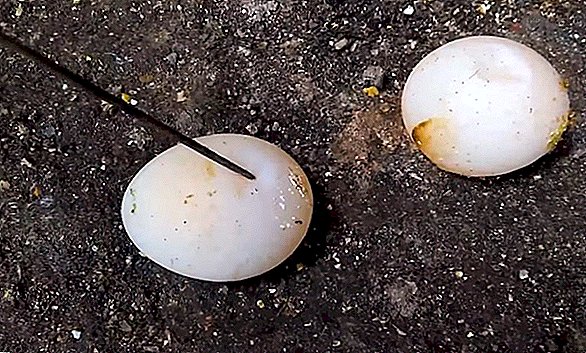 When sick, they can carry eggs without shell.
When sick, they can carry eggs without shell. - complete refusal of sick individuals to eat, resulting in a rapid decrease in live weight;
- depressed lifeless appearance, decreased activity;
- ruffled feathers and inflamed feathery mucous tissues;
- abundant secretions of thick mucous masses, which make breathing difficult and completely obstruct the respiratory tract;
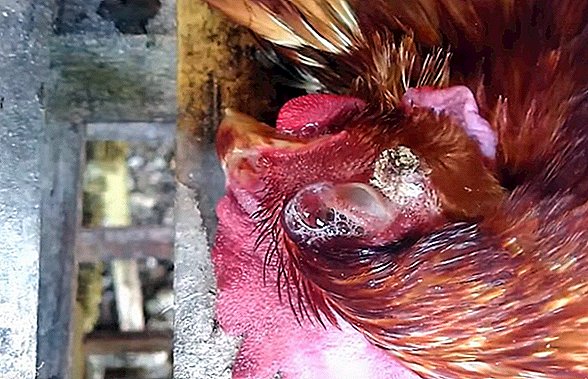
- the presence of severe deep rales and intermittent breathing;
- increased to 40-43 ° C body temperature;
- diarrhea brown-green color;
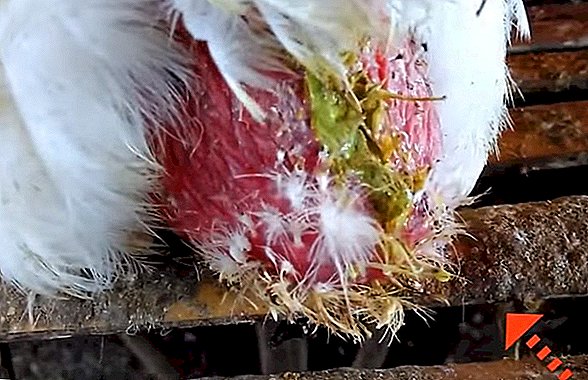
- convulsive seizures;
- neuroses (in chickens, disorders of the central nervous system are manifested by impaired coordination of movement, falling, curving of the wings and neck, lack of response to external irritants, inability to step on one's legs);
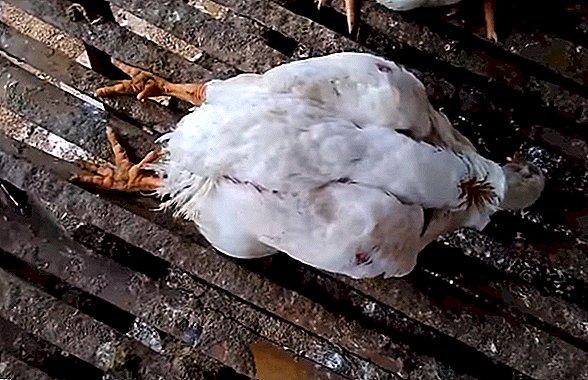
- strong thirst, which is why later the lungs swell and death occurs.
Important! The H5N1 and H7N7 viruses are transmitted by airborne droplets from an infected bird to humans. It has not yet been established cases of transmission of infection between sick and healthy people.
Flu diagnosis
It is important to observe the behavior of the wards of the hens and timely respond to any deviations in their behavior. There is no effective treatment for deadly flu strains today. Therefore, when detecting the slightest symptoms of the disease, it is advisable to inform the veterinary service to check the diagnosis.
The disease is confirmed by histological examination of dead chickens. In such cases, usually found:
- mucosal changes in the digestive organs;

- traces of dysfunction of the stomach and spleen;
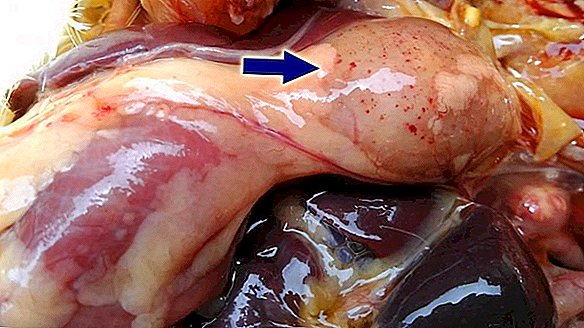
- affected airways characterized by severe swelling;
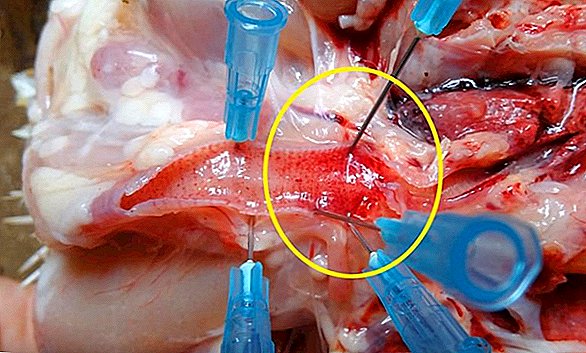
- body dystrophy.

Find out what to do if chickens sneeze, wheeze, cough.
Experts consider the diagnosis confirmed in the following cases:
- isolation and identification of highly pathogenic virus (especially in the presence of signs of subtypes H5 and H7);
- identification signs of ribonucleic acid;
- the presence of antibodies to hemagglutinin viruses of the H5 and H7 subtypes.
 The sick individuals turn blue comb
The sick individuals turn blue comb
In cases when focal outbreaks of bird flu with lethal outcomes are recorded in neighboring regions, it is important to completely limit the free range of domestic birds and keep them completely isolated from the external environment for the next 25 days.
Important! Avian influenza virus is easily destroyed by heat treatment. In meat, the pathogens die with a ten-second exposure at a temperature of +85 degrees Celsius.
Is avian flu treatment possible?
Even if only one chicken died in your chicken coop, if the diagnosis of the avian flu is confirmed, you will have to kill the entire livestock in a bloodless way and burn it. This requirement is justified by the fact that the disease is not amenable to treatment, and the living creatures were in close contact with each other. After slaughtering the house should be disinfected several times.
Despite the development of veterinary medicine, today there is no vaccine against a dangerous virus. Scientists explain this situation by the intense spread of the strain and its rapid mutation. That is why all attempts to invent antidotes were doomed to failure. So far, researchers have only managed to select compounds that inhibit the development of the virus in the body.

WHO recommendations
For personal safety, all owners of home farms and poultry farms, the World Health Organization recommends:
- Limit the contact of poultry with any wild animal.
- Do not allow children to contact with wild waterfowl.
- Dispose of livestock by burning or in specially designated areas.
- If there are diseased individuals in the flock, take care of the poultry by protecting themselves with a respirator, mask and gloves. Also be sure to use interchangeable shoes. After work, be sure to wash your face and hands with soap, and clothes should be treated with special disinfectants, to which influenza viruses are sensitive.
- Never eat sick meat or eggs or birds in contact with it.
- Immediately report cases to the veterinary specialist.
- In the presence of symptoms of viral infections in people developing on the background of the chicken case, immediately seek medical help.
- Always in the refrigerator to store meat and egg products in separate containers.
Did you know? The first mention of bird flu dates back to 1878. The disease was recorded in Italy by the veterinarian Peronchito. In connection with the mass death of livestock, it was originally called the "chicken plague".
Avian Flu Prevention
According to experts, no events guarantee one hundred percent protection of livestock from misfortune. But still, if you act in a complex way, you can create a reliable barrier that no strain can overcome.

Key preventive measures in the fight against insidious bird flu are:
- Complete isolation of poultry from wild fellows.
- Restriction of domestic living creatures from public reservoirs, and in the event of focal outbreaks occurring - from possible locations of wild birds (this period may take several months, therefore reliable and comfortable enclosures will be very appropriate).
- Strict control of livestock feed and water quality. It is unacceptable that the young feed on eggs of unknown origin. It is better to use home products.
- Regular disinfection of feeders, drinkers and poultry houses.
- The establishment of a balanced diet from the first days of life of chicks, as well as the introduction of vitamin complexes into their daily diet.
- In cases of suspected infection, terramycin can be given to sick individuals (spray the medicine at a distance of 20 cm from sick chicken), Chlortetracycline (the drug is added to the feed mixture at the rate of 0.3 g per 1 kg of live weight).
Learn how to cure foot and eye disease in chickens.Preventing illness is always much easier than treating it. А в данном случае, когда многолетние попытки найти лекарство от опасного вируса не принесли ожидаемого результата, любые профилактические меры стоит скрупулёзно исполнять. Даже самые невыполнимые на первый взгляд рекомендации оправдывают желание сохранить куриное поголовье.
Chicken Disease Video
Bird flu reviews
And it's hardly worth even thinking about bird flu, this is just another horror story with the aim of attacking the Russian economy. Avian flu, swine flu, mad cow disease, atypical pneumonia — how many pandemics have you had lately?
About one thousand people all over the world died from them — out of billions — at the time that about half a million died of ordinary flu every year.

... And on the topic. Looks like just panic rumors. Who has no contact with the wild waterfowl, the risks are minimal. This flu was, is and always will be in nature, associated with a migratory bird.
As far as I remember in 2005, there was already a stir on the subject in the Defense Ministry. After a while, everything calmed down ...



 When sick, they can carry eggs without shell.
When sick, they can carry eggs without shell.






